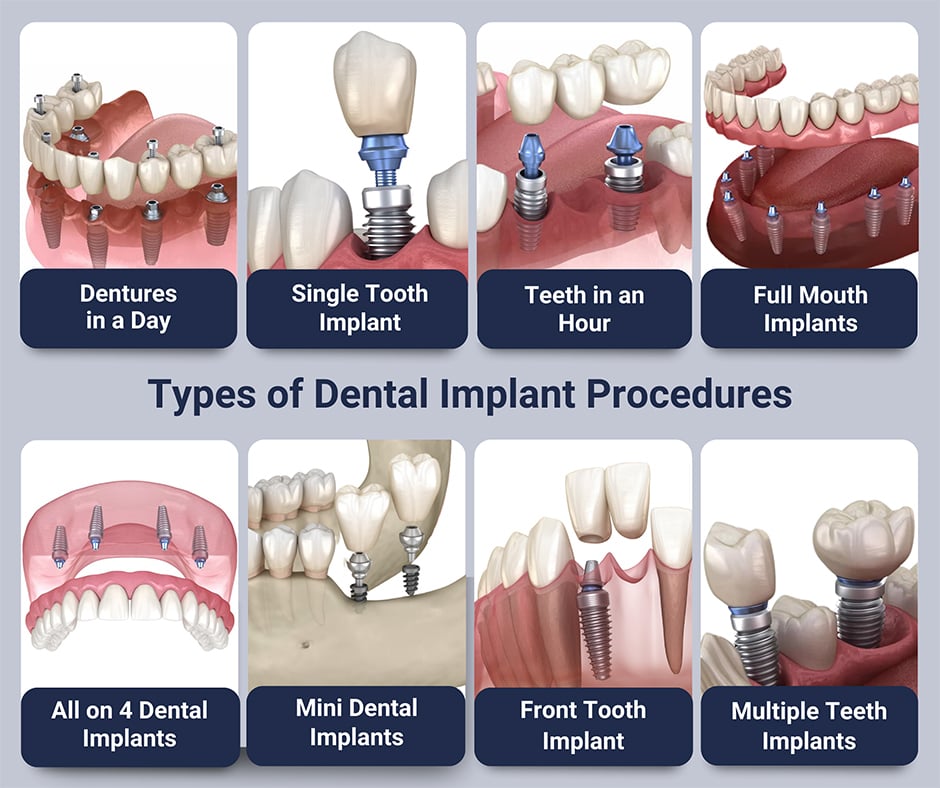The Ultimate Guide To Dental Sense
Table of ContentsNot known Facts About Dental SenseGetting The Dental Sense To WorkDental Sense - QuestionsThe Ultimate Guide To Dental Sense
are clinical gadgets surgically implanted right into the jaw to bring back a person's capability to chew or their appearance. They provide support for artificial (phony) teeth, such as crowns, bridges, or dentures. When a tooth is lost due to injury or condition, an individual can experience issues such as fast bone loss, defective speech, or changes to chewing patterns that cause discomfort.Oral dental implant systems include a dental implant body and oral implant abutment and might likewise include an abutment addiction screw. Front tooth filling. The dental implant body is operatively inserted in the jawbone in area of the tooth's root. The dental implant abutment is usually affixed to the implant body by the joint fixation screw and extends with gum tissues into the mouth to sustain the connected artificial teeth
Cigarette smoking may influence the healing process and reduce the long-term success of the dental implant. The healing process for the dental implant body might take several months or longer, throughout which time you typically have a momentary abutment in area of the tooth. the oral implant procedure: Carefully follow the oral hygiene guidelines provided to you by your oral copyright.
Some Known Incorrect Statements About Dental Sense
Implant failing can result in the requirement for one more surgery to fix or replace the implant system. Recovers the capacity to eat Brings back aesthetic appearance Helps keep the jawbone from reducing as a result of bone loss Maintains the health and wellness of the surrounding bone and gum tissues Aids keep adjacent (nearby) teeth secure Improves lifestyle Damage to surrounding natural teeth during dental implant positioning Injury to the surrounding cells throughout surgical treatment, such as sinus opening Injury during surgical treatment (for instance, crack of surrounding jawbone) Insufficient feature, such as really feeling like the teeth do not bite with each other typically A sensation that the tooth is loosened or twisting in area resulting from a joint screw loosening up Implant body failing (looseness of the implant body) because of systemic infection, which may be more probable in individuals with uncontrolled diabetics issues as a result of neighborhood infection in bone and gums sustaining the dental implant body as a result of delayed healing, which might be more probable in individuals that smoke Trouble cleaning the gums around the implant, leading to poor dental hygiene Neglected gum disease Post-surgical numbness as a result of nerve impingement or damages Constantly alert wellness care service providers and imaging service technicians that you have oral implants prior to any kind of magnetic vibration imaging (MRI) or x-ray procedures.
FDA is not mindful of any damaging occasions reported for MRI or x-ray treatments with dental implants. Oral implants systems are commonly made of materials that comply with global agreement standards of the International Organization for Standardization (ISO) or ASTM International. These criteria have details of what makes a risk-free material.

A dental implant is a framework that replaces a missing tooth. With screw-like gadgets, the specialist inserts an implant right into the jawbone, and it acts as an anchor for a synthetic tooth, called a crown.
How Dental Sense can Save You Time, Stress, and Money.
Some people are not qualified for oral implant surgery. It is for oral surgeons to operate individuals with: severe illnessuncontrollable metabolic diseasebone or soft tissue condition or infectionIf these problems are solved, an individual can have the surgical treatment. In, dental specialists avoid operating on people with: If people with any of the above go through oral implant surgical treatment, there is a higher danger of the implant stopping working.

Dental implant surgical procedure is a personalized process. It's not the exact same for every person. The following gives a general summary of what you can anticipate your dental practitioner, dental doctor, periodontist or prosthodontist to do: Place the implant operatively. Give you time to recover. Affix the blog post and last crown, bridge or denture.
Next, your surgeon will thoroughly put the dental implant right into your jaw. Your cosmetic surgeon will certainly rearrange your gums and close the incision with stitches. If your implant is near try these out the front of your mouth, your dental practitioner will certainly make a temporary tooth for you to use till you recover. This way, you will not have a gap in your smile while you recover.
Unknown Facts About Dental Sense
Throughout the recovery stage, your jawbone must fuse to the dental implant. This procedure can take anywhere from 3 to nine months.
When your dental implant heals, your dental expert can connect the abutment (little port post) and your final remediation (crown, bridge or denture). This typically takes about one hour to finish and might require a 2nd minor surgical procedure. You should not feel any kind of discomfort throughout your dental implant procedure since your service provider will certainly use medication to numb your gum tissues.
Comments on “10 Easy Facts About Dental Sense Explained”